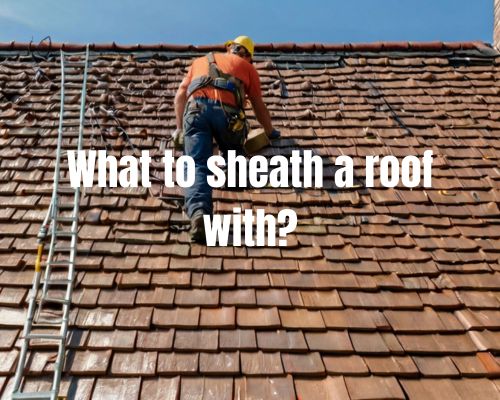When building or replacing a roof, one of the most important decisions you’ll make is what material to use for the roof sheathing. The sheathing is the layer of material that sits on top of the roof rafters and provides a solid base for the roofing system.

“It’s important for the sheathing to be strong and durable, as it plays a critical role in the structural integrity of the roof.” said Charles Jimerson of Commercial Roofing NJ.
There are several different materials that can be used for roof sheathing, including plywood, oriented strand board (OSB), and composite panels.
Plywood is a traditional choice that has been used for many years, and is known for its strength and durability.
OSB is a newer material that is also strong and durable, and is often less expensive than plywood. Composite panels are another option, and are made from a combination of materials such as foam and fiberglass, which can provide additional insulation properties.
Types of Roof Sheathing Materials
When choosing the right roof sheathing material, you have a few options to consider. The most common types of roof sheathing materials include plywood, oriented strand board (OSB), and alternative sheathing materials.
Plywood Roof Sheathing
Plywood roof sheathing is a popular choice due to its strength and durability. Plywood is made from thin layers of wood that are glued together in a cross-grain pattern, which provides structural integrity and helps prevent warping.
Exterior C/D grade plywood is recommended for roof sheathing, as it has a high level of durability and can withstand harsh weather conditions.
OSB Roof Sheathing
Oriented strand board (OSB) is another commonly used roof sheathing material. OSB is made from wood chips that are glued together with resin and formed into panels.
While OSB is less expensive than plywood, it is also less durable and may not hold up as well over time. However, it is still a strong and reliable option for roof sheathing.
Alternative Sheathing Materials
In addition to plywood and OSB, there are other alternative sheathing materials available, such as wafer-board and particle board. However, these materials are generally not recommended for use as roof sheathing due to their lower strength and durability.
When choosing the best roof sheathing material for your project, consider factors such as cost, strength, and the type of roofing material that will be installed on top of the sheathing. Fiberglass shingles, metal panels, and rigid roofing all have different requirements for roof sheathing, so it is important to consult with a professional to ensure that you are choosing the right material for your specific needs.
Installation and Best Practices
When installing roof sheathing, there are several best practices to follow to ensure a durable and long-lasting roof. Here are some key considerations to keep in mind during the installation process.
Measuring and Cutting
Before you begin installing the roof sheathing, measure the area of the roof to determine the amount of material needed. Use a tape measure to measure the length and width of the roof, and then calculate the square footage.
Once you have the square footage, you can determine the number of sheets of sheathing needed.
When cutting the sheathing, use a circular saw with a sharp blade to ensure clean cuts. Make sure to measure and mark the sheathing accurately before cutting to avoid waste.
Securing the Sheathing
To ensure stability and prevent sagging, you must properly secure the sheathing to the support system. Use screws or nails to attach the sheathing to the rafters or trusses, making sure to follow the manufacturer’s recommendations for fastener spacing.
Avoid overdriving the fasteners, as this can cause the sheathing to buckle or warp.
Ensuring Proper Ventilation
Proper ventilation is essential for preventing fires, rotting sheathing, and ensuring energy efficiency.
Make sure to follow current building codes for roof ventilation, including the use of exhaust air and baffles to allow for proper airflow. Ridge vents are also a popular option for ensuring adequate ventilation.
Avoiding Common Installation Errors
To ensure a long lifespan for your roof, it’s important to avoid common installation errors.
These can include using incorrect nail spacing, failing to properly ventilate the roof, and not following manufacturer recommendations for fastener type and placement.
Make sure to work with a reputable roofing contractor like Commercial Roofing NJ, and use high-quality materials. This includes roof shingles and adhesives, to ensure uniformity and weatherproofing.
By following these best practices and paying attention to key considerations during the installation process, you can ensure a long-lasting and durable roof for your home or building.